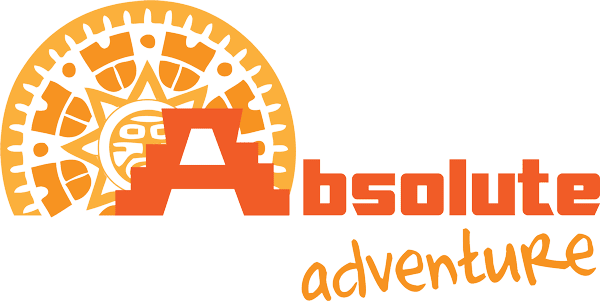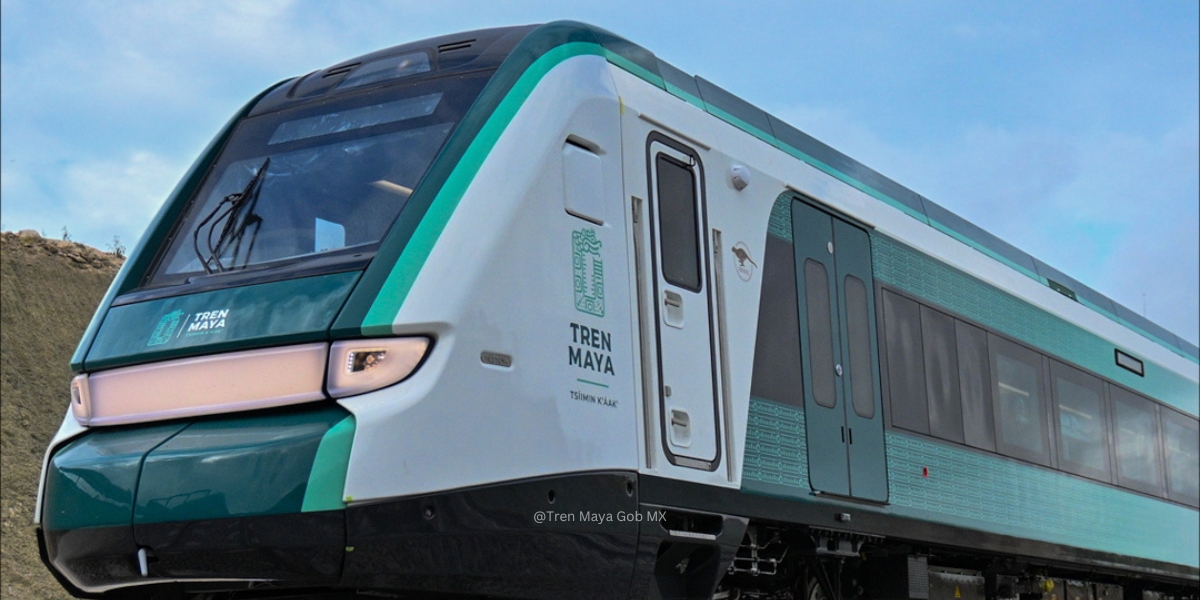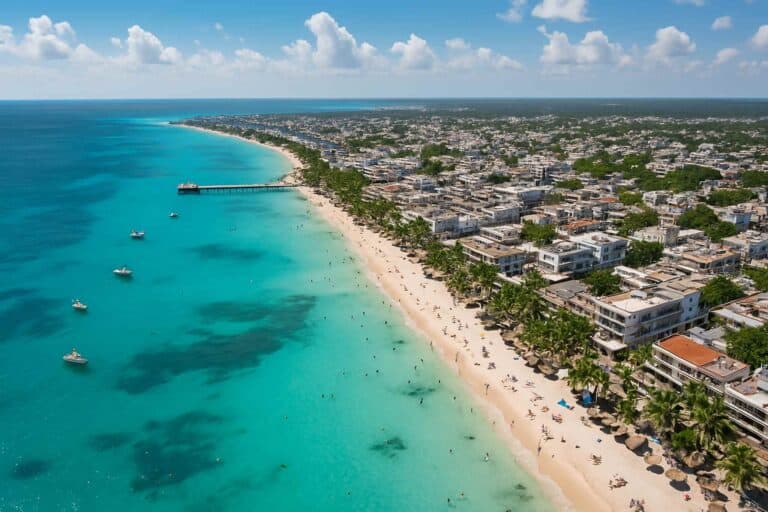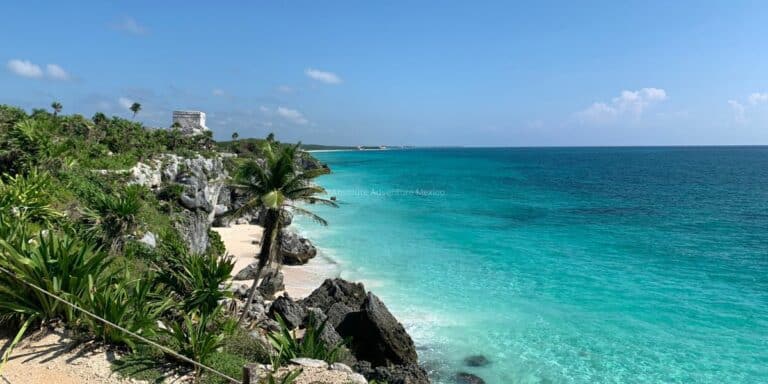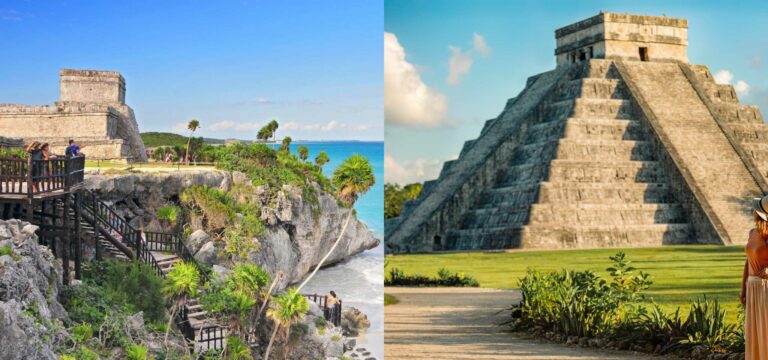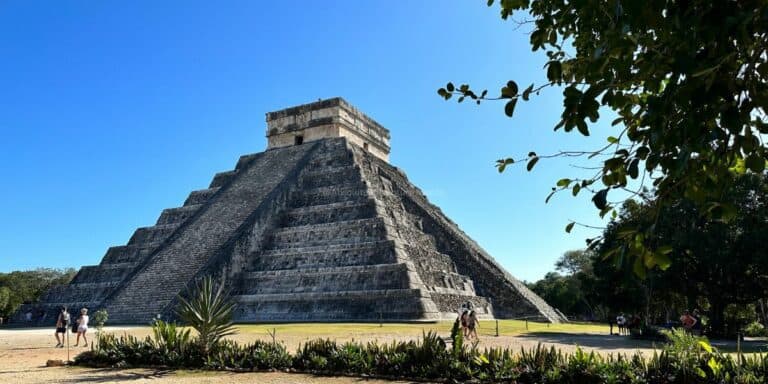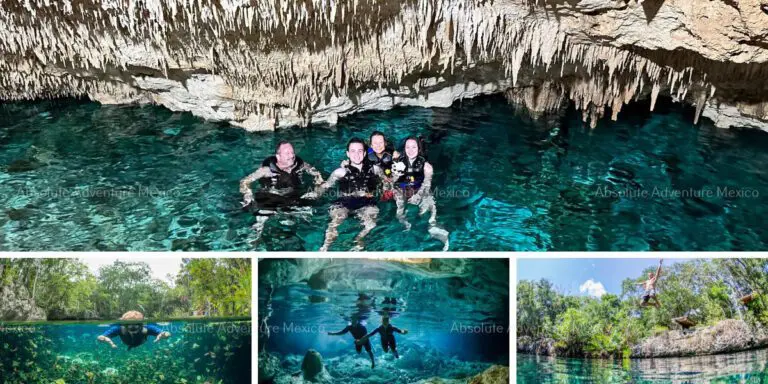The Tren Maya—also known as the Maya Train—is one of Mexico’s most ambitious transportation projects.
Launched in phases, the route connecting Mérida to Tulum has been fully operational since 2024, allowing passengers to travel between the Yucatán’s capital and the Riviera Maya with ease. The network links key coastal cities such as Cancún, Playa del Carmen, Puerto Morelos, and Tulum with inland cultural gems like Chichén Itzá and Valladolid.
However, the southern section of the Maya Train, which will eventually connect destinations like Bacalar, Chetumal, Calakmul, and Palenque, is still under construction and expected to open in stages.
So, how convenient is the Maya Train for tourists right now? Let’s break it down.
Tren Maya – Mayan Train
Tren Maya Stations on the Riviera Maya
The Tren Maya serves several important towns along the Caribbean coastline, making it an appealing transportation option for coastal visitors. Current operating stations include:
Cancún Airport Station: The Cancún Station is located at the Cancún International Airport, not in the city center. While it’s convenient for arriving or departing flights, travelers staying in downtown Cancún or the hotel zone will need to take a shuttle or taxi to reach their accommodation. Expect a travel time of approximately 20–30 minutes, depending on traffic.
Puerto Morelos Station: A quick ride from the town center (6 miles – 15 minutes), ideal for travelers staying in this laid-back beach town.
Playa del Carmen Station: Outside the city, about 8 miles (13 km) from downtown. Without traffic, the ride takes around 30 minutes, but during peak hours it may take longer.
Tulum Station: Located 4 miles from the dwomtown. This is the best station for accessing the Tulum Ruins (15 minutes), beach zone (30 minutes), and nearby cenotes (Gran Cenote, Car Wash).
Each Tren Maya station is reachable by local transport, but most require a taxi or transfer
Maya Train Schedule Tulum-Playa-Cancun, Costs, and Practical Considerations
The Maya Train schedule offers several daily departures between Cancún and Tulum, though trains run only 3 times per day in each direction.
For example, from Cancún to Tulum, trains depart around 9:00 AM, 11:45 AM, and 3:30 PM, while returning from Tulum to Cancún, trains leave at approximately 1:25 PM, 6:16 PM, and 8:02 PM. Ticket prices for this route are around 406 MXN (about USD 24) one way.
It’s important to book your tickets in advance, especially on weekends and holidays, as seats fill quickly.
However, there are some practical limitations to consider:
Midday Arrivals: Most train stops occur during the hottest hours of the day, making sightseeing—especially at outdoor ruins or beaches—less comfortable.
Crowds: Because the train often arrives during peak tourist times, you may face busy attractions and long lines.
Limited Frequency: With only a handful of trains daily, your schedule is less flexible, and missed trains can cause delays in your itinerary.
Additional Transport Costs: Although train tickets are affordable, you will likely need taxis or shuttles to reach and leave stations, which can add nearly the same cost as the ticket itself.
Group Travel Expenses: For families or groups, combined train fares and taxi rides can add up quickly.
Renting a car or booking a private tour may offer better value and flexibility.
Chichén Itzá Station: Good in Theory, Tricky in Practice
The ancient city of Chichén Itzá—a UNESCO World Heritage Site and one of the New Seven Wonders of the World—is undoubtedly one of the top attractions to visit during your holidays in the Yucatán Peninsula. Fortunately, the Tren Maya does include a dedicated station for Chichén Itzá, offering a direct rail link to this iconic archaeological site.
However, the current Maya Train schedule makes it challenging to visit Chichén Itzá efficiently from coastal destinations like Cancún, Playa del Carmen, or Tulum.
If you’re staying in Cancún or Playa del Carmen, there are no morning trains that allow you to arrive at Chichén Itzá early. The only option is to take an evening train the day before, stay overnight in Valladolid or near Chichén Itzá, and then continue the journey in the morning. Even so, you typically won’t reach the site before 9:00 AM, when crowds and heat are already setting in.
From Tulum, the route is even more complicated… Since the Maya Train route heads north to Playa del Carmen and Cancún first, then west toward Chichén Itzá, the total trip takes around 4 hours. In contrast, a direct drive from Tulum takes just 2.5 hours, making the train an impractical option for a same-day round trip.
In short, while it’s exciting that Chichén Itzá has its own Maya Train station, the current schedule and routing mean that it’s not yet ideal for day trips from the Riviera Maya coast. For early access, more time on-site, and smaller crowds, a car or a Chichen Itza private tour remains the better option.
Scenic Value: What You See from the Train
The Tren Maya journey offers some peaceful scenery, but don’t expect dramatic views:
Jungle Landscapes: Much of the route passes through dense tropical forest.
No Ocean Views: The train does not travel along the coast, so you won’t see beaches or turquoise waters.
While relaxing, the route is more about convenience than spectacular sightseeing.
Environmental Impact of the Tren Maya
At first glance, traveling by train seems like a greener, more convenient alternative to renting a car or taking buses. However, when you look more closely, the balance is more complex.
Despite being promoted as a green project, the Maya Train has generated environmental concerns:
Deforestation: Rail construction cut through sensitive jungle areas, disrupting ecosystems.
Impact on Cenotes and Water Tables: Construction near limestone ground and underground rivers has raised alarms about potential long-term damage.
Wildlife Displacement: The route affects migratory paths and habitats of native animals.
Diesel Engines: The trains use diesel, not electricity, which limits the project’s eco-friendly credentials.
Rapid Urban Development: Stations encourage construction and mass tourism in previously quiet areas.
Alternatives to the Maya Train
If flexibility and early access to attractions are your priorities, consider these options:
Rental Car: Offers full control of your schedule and allows you to explore cenotes, pueblos, and ruins at your own pace.
ADO Buses: Comfortable, budget-friendly, and well-connected. ADO is a good option for solo travelers or backpackers.
Private Tours: Door-to-door service with certified guides, early access, and curated experiences. Private Tours offer unique experiences.
Final Thoughts: Should You Take the Tren Maya?
The Tren Maya (Maya Train) is a unique and modern way to explore the Yucatán Peninsula. It’s comfortable, scenic, and connects key destinations across the Mayan region, including coastal cities and cultural landmarks inland.
If you’re planning a multi-day circuit and have the time to spend at least two days in each destination, the Maya Train can be a great alternative to circuit bus tours. It offers you the freedom to travel on your own schedule—without joining a 50-person bus group—and adds a novel rail experience to your trip.
However, for daily visits or day trips, it’s not possible or not recommended. The infrequent train schedule, limited station access, and the need for additional transport to and from the stations often make car rentals or private tours more efficient and flexible.
In short: the Tren Maya is ideal if you’re traveling slow and independently from one destination to another over several days. But for travelers focused on maximizing their sightseeing time in a single day, traditional transport options remain more practical ( car rentals, ADO buses or guided tours ).
FAQ: Tren Maya – Maya Train
What is the Tren Maya?
The Tren Maya, or Maya Train, is a railway project spanning the entire Yucatán Peninsula, the heart of the ancient Mayan civilization.
It connects the three states that make up this region: Yucatán, Campeche, and Quintana Roo.
This network links the Caribbean coast’s popular tourist destinations in Quintana Roo—like Cancún, Playa del Carmen, and Tulum—with culturally rich inland cities such as Mérida and Valladolid in Yucatán state, and historic sites like Palenque and Campeche city in Campeche state.
By connecting these diverse locations, the Maya Train aims to promote sustainable tourism and regional development throughout the entire Mayan area.
What is the current Maya Train schedule?
For the most up-to-date information on the Tren Maya route and schedule, you can consult the official website.
This will help you plan your trip with the latest departure times and station details.
Can I take the Maya Train to visit Chichén Itzá?
Yes, but not conveniently. There are no morning trains from the Riviera Maya to Chichén Itzá. You must travel the night before and stay in Valladolid or Chichen Itza to arrive early at the ruins.
How much does the Tren Maya cost?
A one-way ticket between Cancún and Tulum costs around 406 MXN (about USD 24). Other routes may differ.
Is the Maya Train fast?
When you factor in the necessary shuttle or taxi rides to and from the train stations, the total travel time using the Maya Train often ends up being almost the same as—or sometimes longer than—traveling by car door-to-door. This makes driving a more convenient and flexible option for many travelers.
Is the train accessible for travelers with disabilities?
Yes, the Tren Maya includes accessible seating and facilities at most stations and onboard.
Is it better than renting a car or booking a tour?
Not always. For early access to ruins, flexible schedules, or off-the-beaten-path stops (cenotes), a car or private tour is often a better option.
Example: Visiting Tulum Ruins & Cenote Dos Ojos from Cancún — Maya Train vs Private Tour
Option 1: Maya Train + Taxis
8:30 AM: Taxi from hotel to Train station
9:00 AM: Depart Cancún Airport station by train
10:45 AM: Arrive at Tulum station
11:00 AM: Taxi to Tulum ruins (approx. 10–15 min)
11:30 AM–01:15 PM : Visit ruins during peak heat & crowds
01:15 PM – 01:45 PM: Taxi to Dos Ojos cenote
01:45 PM–03:00 PM: Swim at cenote
03:00 PM – 03:30 PM: Taxi to Tulum center
03:30 PM-05:45 PM: free time in Tulum and taxi to station
06:16 PM or 08:02 PM – Train back to Cancún and arrive 8:00PM or 10:00PM!
Final taxi back to hotel…
⌛ Total time: ~12+ hours round trip
😓 Downsides: Midday heat, multiple transfers, long waits; you must arrange and pay for all taxis, entrance fees, rent snorkeling gear yourself, keep your belongings with you at all times, and it can be challenging to find a taxi waiting at the cenote or ruin entrances…
Option 2: Private Tour with Absolute Adventure
6:00 AM Direct pickup from your hotel in Cancún
8:00 AM Arrive at Tulum ruins at the opening of the site
8:00 AM – 10:00 AM Guided tour of the ruins – no crowds, no heat
10:00 AM – 10:30 AM Transport to Cenote Dos Ojos
10:30 AM – 11:45 AM Cenote Dos Ojos, swim, snorkel & relax
11:45 AM – 12:30 PM Lunch stop
12:30 PM -2:30 PM Return to your hotel
⌛ Total time: ~8 hours, all door-to-door
😊 Upside: Door-to-door private transport, visit at the best times, professional guide included, keep your belongings safely in the van, explore at your own pace, no stress about missing trains, and the van waits for you at all times.
